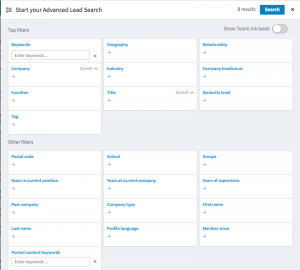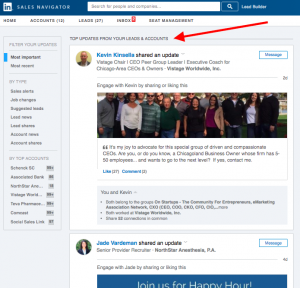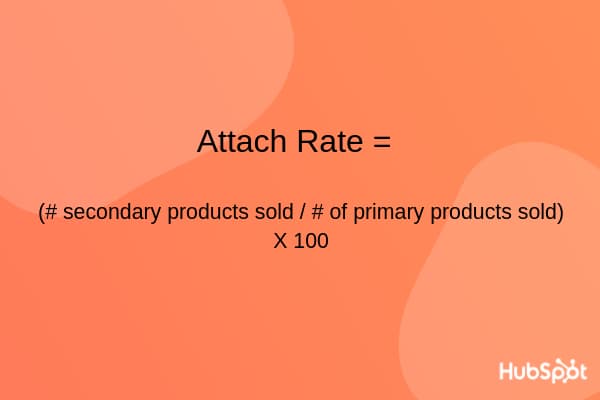Recently, a ChartMogul customer told me, “You know, growing revenue is important to us, but we’re driven by a mission to help as many people as possible. So we have to find that fine balance that allows us to achieve both.”
Admittedly, it’s not unexpected to hear that from a team that’s building a meditation app. However, this also made me think that B2B SaaS isn’t that different. In the typical case, a customer becomes profitable long after they subscribe to a product. Because of that, SaaS companies have to put their customers’ success before their own. That’s the only way to succeed in the first place.
Pricing plays a vital role in that — not just as a way to achieve our own success, but even more importantly, as a way to align our motivation to that of our customers.
Moreover, having the correct pricing is not just about (not) leaving money on the table. Maximizing the value you get out of your customers gives you the resources you need to continue working on the product so that it’s even more useful to your audience.
It also allows you to find the customers who are best positioned to benefit from your product and saves you from trying to target everyone who lands on your site.
These are some of the lessons, we’ve learned at ChartMogul, experimenting with different pricing plans over the last 4-5 years. In this article, I want to share with you our most important learnings.
What is great pricing all about?
Many people in SaaS like to extoll the merits of value-based pricing and it’s certainly worth looking into if you’re still pricing by comparing yourself to competitors.
However, my feeling is that most companies in the industry are beyond this point.
Today, good pricing comes down to finding the right value metric and using that as the basis for your billing structure.
Note that this is NOT the same as “value-based” pricing. Value-based pricing can easily put a limit on how much value you can extract from a customer. Let’s play a little thought experiment with HubSpot’s pricing to understand the difference between the two:

Imagine they only offered the 3 straightforward plans above without the Contacts dimension. In that case, the highest they could charge a customer would be $3,200 no matter whether that customer has 20,000 or 200,000 contacts in their database.
That’s why they use the list size as a value metric to adjust the price for larger customers. Working with a value metric allows you to build your pricing model in a way that doesn’t put a ceiling on your revenue and the success of your customers.
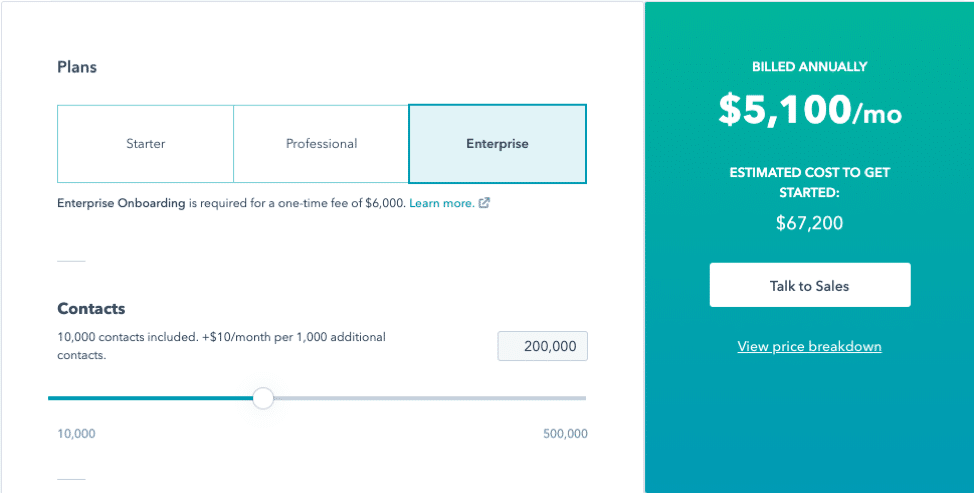
This is key as it allows you to grow as your customers grow, achieving the SaaS holy land of Net Negative Churn.
The right pricing model is a great competitive advantage to your company — it allows you to get in early with a free/low-priced tier, become an integral part of how your customers work, and then grow with them long-term without having to spend on marketing and sales to acquire mature customers.
Slack is a great example of that — they combine a free plan with per-seat pricing, which makes sense in their case. The result is one of the highest net negative churn rates in the industry.
The right pricing aligns you to your customers
Choosing the right value metric means that you have an incentive to make sure your customers grow as that means your revenue expands organically.
That allows you to prioritize building the right features for those customers.
We can see this at play with Slack’s focus on building the tool as a platform. This allows their customers to bring in more teams and departments as they grow, thus ensuring Slack is also growing.
Finally, having this kind of pricing quickly weeds out the companies that are not a good fit for your product. That means you don’t have to worry about or get distracted with building features for them.
Pricing shapes the perception of your company
Low price can be a bad thing if your ideal customers perceive you as too cheap, to the point where they might consider you not professional enough to trust their business with.
Pricing shapes your customers’ perception of who you are and how you operate as a company.
It also sets how your employees think about your business — it can set the idea that you’re not selling a commodity or a widget, but rather something truly transformational and really aligned with your customers.
Now we’ve established why finding your value metric is so important, let’s look at some of the important things you need to consider in order to take advantage of it.
3 steps to build your pricing around a value metric
It’s always easier to understand value metrics when you look at companies who’ve found them and used them to great success.
Just look at those brands that boost the highest net negative churn and you’ll almost certainly find an element of pricing around a value metric.
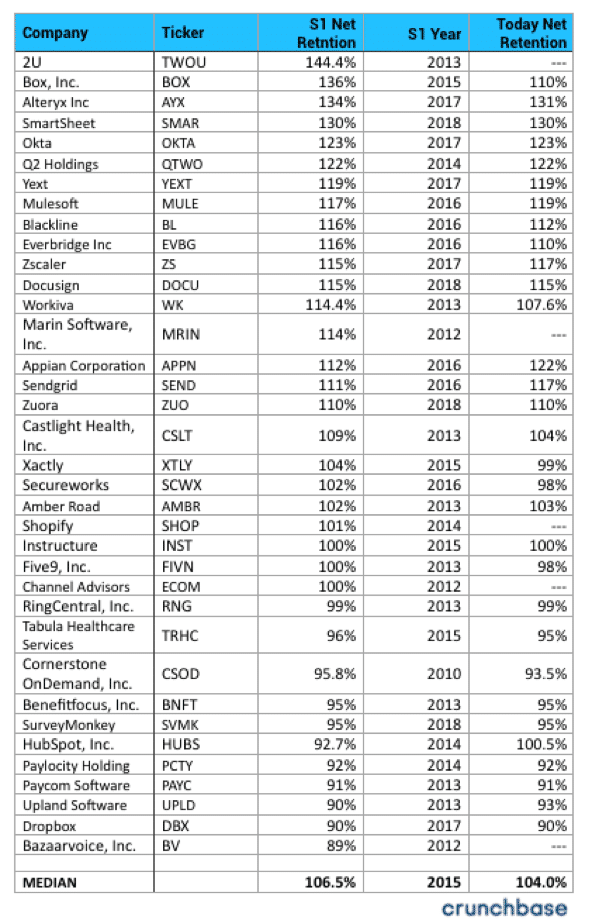
Unfortunately, finding it isn’t so easy, but here are a few ways that can make it easier to find.
Find your customers’ “desired outcome” and put a value on it
Lincoln Murphy argues that people don’t just hire a product to get a job done, they have a higher goal — a desired outcome — they want to achieve with it.
When a marketing team adopts MailChimp they don’t do it because they want to send better emails — they want to reach an audience, close more customers, retain them for longer or (most likely) do a combination of all.
That means that for every outcome customers want to achieve, there are usually multiple ways they can do it. A team that’s not using Slack can use Skype, a project management tool such as Asana or even email to achieve the same outcome.
Email is free, but it’s also not built for this type of communication, which means it introduces a lot of friction and ends up costing a lot of time.
Even if a team loses just 10 hours per month as a result of using email (a very conservative estimate) and those cost ~$50/hour, that means a better tool can easily deliver $500 in value.
If your team is building a new Slack competitor and you’re wondering how to price, conventional wisdom says it’s a good idea to provide a lot more value than you’re charging for.
However, putting that kind of numerical value is not always so straightforward — even for the people on the team who experience it. That’s why, especially when you’re starting out, it’s a good idea to provide value at a multiple with your tool.
Use the “10x Rule” and price your product at around 1/10th of the value you’re providing. If your product is saving customers $500/month as we saw in the example above, following the 10x rule would mean you price it at $50/month.
Once you establish that price, it doesn’t mean you cannot change it. In fact, you should. Keep testing to find the optimal price — another rule of thumb is to keep raising prices after each sale until you start to get pushback from about 20% of the prospects you speak to.
Set your pricing to attract customers you can grow with
One of the benefits of pricing around a value metric (especially if you have a free plan) is that it allows you to take on customers who might not be profitable at the moment but have the potential to grow.
Another benefit is that this pricing structure doesn’t pressure your commercial team to extract 100% of the value of a customer at Day 0.
Instead, you can focus on building the relationship by taking the time to learn about your customers, improve the product using what you learn from them, and then upsell/expand to capture the full value they have to offer.
Maximize your revenue with multi-dimensional pricing
Using more than one dimension for your pricing (for example a set of features + a value metric) is a great way to maximize your revenue by targeting several different customer segments.
Companies would always use a feature that would only be useful to one specific type of customer they want to reach. One of the most common examples of such a feature is white labeling, which usually targets agencies and other service businesses:
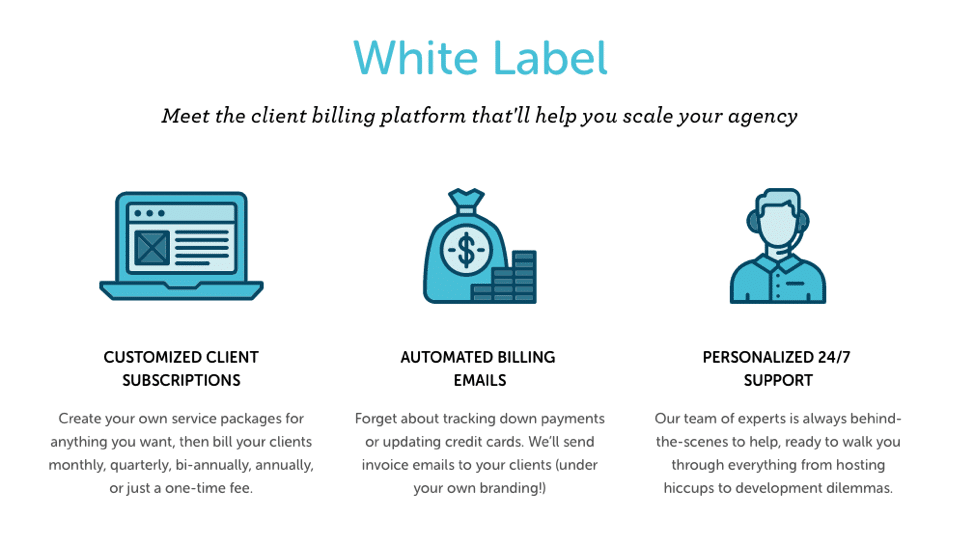
If there’s a downside to using a value metric for your pricing, it is the fact that it introduces uncertainty for your customers. That could kill many a deal, especially if you’re selling to larger enterprises who budget at least a year in advance.
3-Part-Tariffs (3PT) allow you to overcome this. In this approach, your base fee includes some usage.
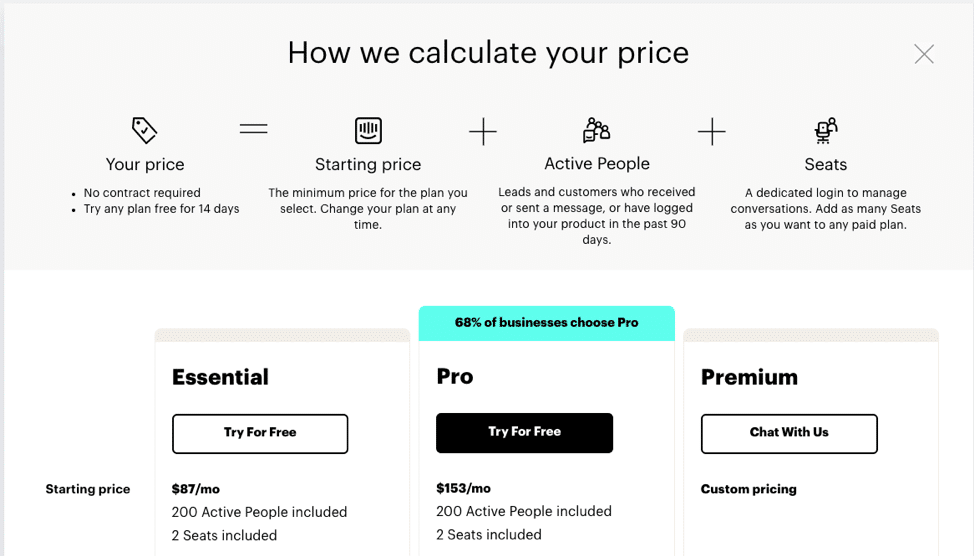
Studies show that this pricing structure produces the highest overall impact because it makes it easier for customers to predict how much they’d have to pay and gives them peace of mind.
How we used a value metric & these rules to revamp our pricing
In our initial attempt to turn to arrange our pricing around a value metric, we were charging by the number of active customers on each account. We thought this provided a just basis for our pricing structure that allowed us to dedicate the needed resources towards serving large-volume customers.
However, we quickly realized that created a two-sided problem:
-
-
- Our prices were extremely high for B2C customers who have a high volume of users/customers, but a low ARPA — that made us unaffordable to them.
- We were leaving a lot of money on the table with our B2B customers who on average have a lower number of customers, but a much higher ARPA.
This created a need to constantly tweak our pricing on the fly. For example, we started to use discounting in an attempt to offer a level playing ground to all customers and prospects.
It wasn’t the straightforward structure we were hoping for. Clearly, we needed to make a change.
The final push to make a change to our pricing came from an unlikely source — our process to define the company mission that we underwent in 2018.
We defined our mission statement as:
To help companies grow faster using their revenue data.
Soon we realized that the only way to uphold this and align our pricing to our mission was by moving to revenue-based pricing (and more specifically MRR).
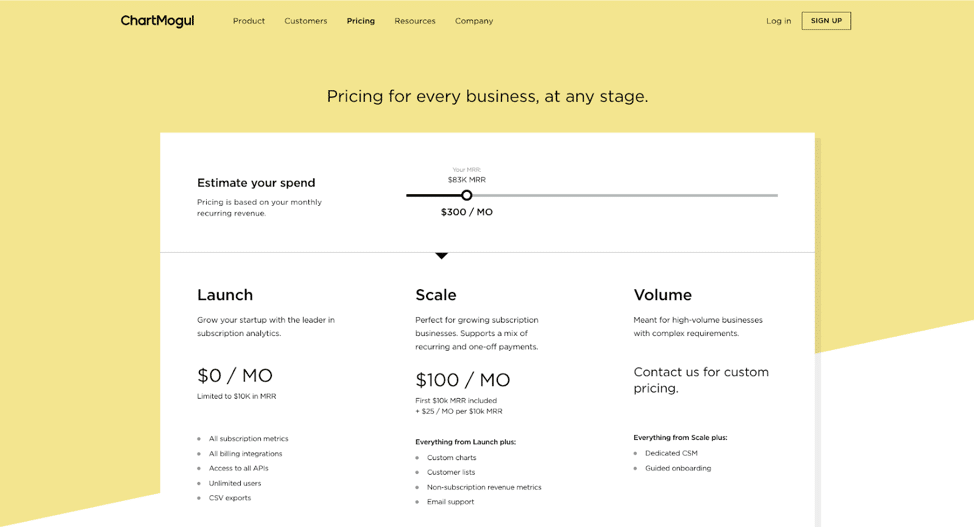
That would mean that the better job we do at helping our customers grow their revenue by providing them with critical insights about their customers, their growth, and retention, the more money we can make as well.
Our incentives were now aligned with those of our ideal customers.
In addition, our new pricing completely eliminated the need for us to provide discounts as part of our sales process in an attempt to level the playing field for customers. As our price is not set on the amount of MRR a customer generates, it also means it’s directly correlated with the relative affordability of our product for that customer.
There’s no simple X-step process I can give you to follow to reach your ideal pricing structure. Indeed, I know from ChartMogul’s experience that it took numerous iterations before we reached a model that works for us.
What helped us was following the 3 features I mentioned above.
We focus on the desired outcome
Our customers tell us they were considering hiring a business analyst or building a tool internally to gain insight into how their business is growing before they found our platform.
We know what their desired outcome is — they want to have a clear picture of what’s happening with their business — and we know what the possible alternatives are and approximately how much they would cost them.
That allows us to put a (perceived) numerical value on the benefit our platform provides and use that as guidance when we come up with a price structure.
We attract early-stage customers with a free plan
ChartMogul is free for companies that generate up to $10,000 in MRR.
This allows us to compete with a number of free ways to achieve the desired outcome — the native analytics by Stripe, the App Store, etc.; Google Sheets; and even some of our direct competitors.
Even more importantly, we believe this will allow us to catch the next Airbnb or Uber in its early days and become ingrained in their workflow.
We use a simple 3-part-tariff
Our main plan comes with $10,000 in MRR included in the price and it grows linearly with each additional $10,000 in revenue.
This allows customers to quickly understand how much they would have to pay and also to forecast their subscription rate based on projected growth for the year and actual CMRR.
In addition, for customers that come in straight away with a high level of data and requirements, and/or serious growth projections, our sales team is able to build appropriate proposals.
You won’t always get your pricing right the first time
We’ve used several different structures over the last few years before we got to a point where we feel confident about our pricing model.
I realize writing that might hit your motivation to experiment and improve your own pricing because of how time-consuming and complicated the process sounds.
In reality, this is one of the most important decisions you have to take as an entrepreneur. It deserves your time.
The post How To Achieve Net Negative Churn By Using Value Metrics In Your Pricing appeared first on OpenView.














 worth the $79.99/month?
worth the $79.99/month?